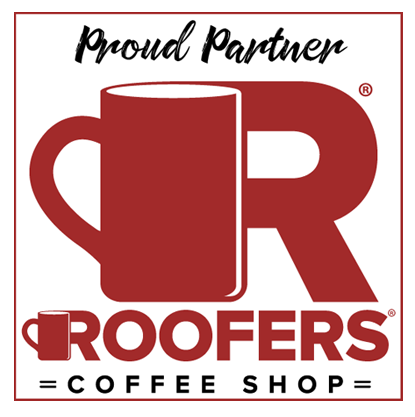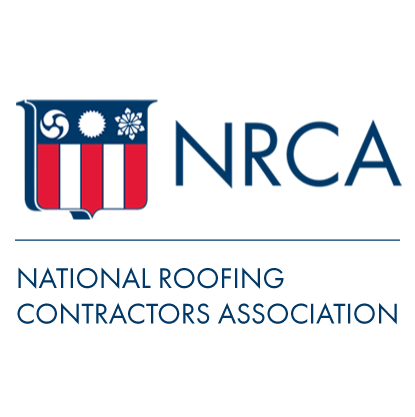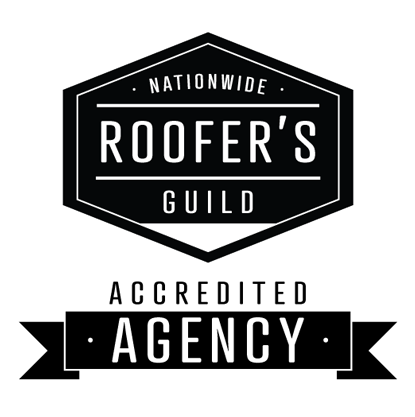Roofing marketing is a pillar of every successful business in the industry.
A well-crafted marketing campaign is essential to reach your promotional goals of growth, stability, and profit.
Before I discuss my proven tactics, I’d like you to answer a simple question to determine how serious you are about growing your business:
As the founder of Roofing Webmasters, a top-rated digital marketing agency for roofers, I would find it easy to rehash marketing “ideas” from other articles and blog posts on this subject.
But I have something better: first-hand experience and data based on 15 years of internal marketing data from bonafide roofing companies.
These tactics will offer something to everyone, from the strategic specialization of the startup roofer’s SEO campaign to the grandiose branding of an expanding company’s multi-channel endeavor.
Using my data-driven insights, roofers can generate a consistent stream of exclusive roofing leads en route to a dominant 2025, resulting in growth and prosperity.
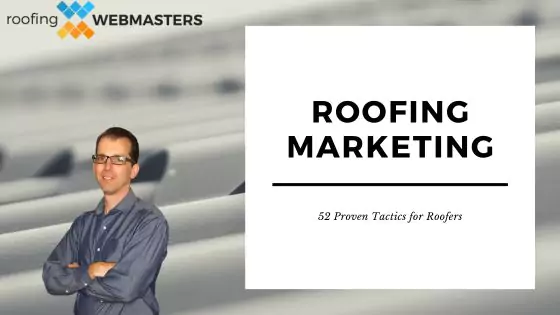
Any blog writer, or AI bot for that matter, can scrape information from around the web and reword it for their own marketing article.
That’s a massive problem for you because the source information is untrustworthy.
Throughout my 15+ years of first-hand experience, I’ve identified the most essential roofing marketing statistics.
I’ve used this trusted and verified data as the basis for the marketing tactics I present in this article.
Roofing Websites
1) Create a Website
Every roofing company needs a website. Whether you’re just starting out or are a 10+ year veteran of the industry, a functional website is essential to your marketing campaign.
Your website URL will attach to your business listings and social profiles as you build authority and trust.
Most importantly, your website is controlled by you, unlike third-party content (YouTube, Facebook, etc.).
2) Purchase a Domain Name
Choose a branded domain name that incorporates one or more of your company name, industry (roofing), and location.
Avoid an unbranded exact-match domain like roofershouston.com, as consumers cannot distinguish your company from others.
Similarly, don’t choose a generic domain name like bobsthebest.com because search engines are less likely to associate it with the roofing category.
3) Invest in Mobile UX
Today’s consumer expects quick-loading websites that are easy to navigate through a mobile device.
Check your website speed on PageSpeed Insights to gauge its current usability.
Also, make sure your calls to action, such as phone numbers, contact forms, etc., are easy to click and populate on a mobile browser.

Google Organic Search
4) Target Keywords
Use SEMrush and Ahrefs to research roofing keywords in your city.
In addition, understand that long-tail and hidden terms account for over 50% of organic clicks.
Showcase jobs and projects with thorough descriptions to pick up these long-tail phrases.
5) On-Page Optimization
Fill out title tags, meta descriptions, and breadcrumbs on each page.
Ensure your content covers the target topic and utilizes NLP-friendly writing to help search engines understand it and its subtopics.
Incorporate internal links to other relevant pages to foster positive user engagement signals.
6) Crawling and Indexing
Ensure your website and its pages are easily crawled by Google bots.
Verify your website through Google Search Console and submit an XML sitemap to streamline the crawling process.
When creating a new page or post, ensure it is accessible through the sitemap, site architecture, or internal linking.

Google Business Profile
7) Claim Your Google Business Profile
Claim your Google Business Profile if you have not already done so.
Verify your GBP with your genuine business address.
Next, connect your website URL to your listing and upload unique and original photos to your profile.
8) Request Google Reviews
Set up a review request process through 3rd party software or an automated email marketing campaign.
Ensure you also ask for reviews in person after completing a roofing project.
Meanwhile, monitor your reviews and respond to both positive and negative feedback.
9) Optimize for Google Map 3-Pack
Add content to your website to boost Google Map 3-Pack rankings.
Ensure your website’s homepage mentions services you want to rank for on Google Maps.
Add geo-coordinates from recent jobs as a digital hand raise on Google Maps.
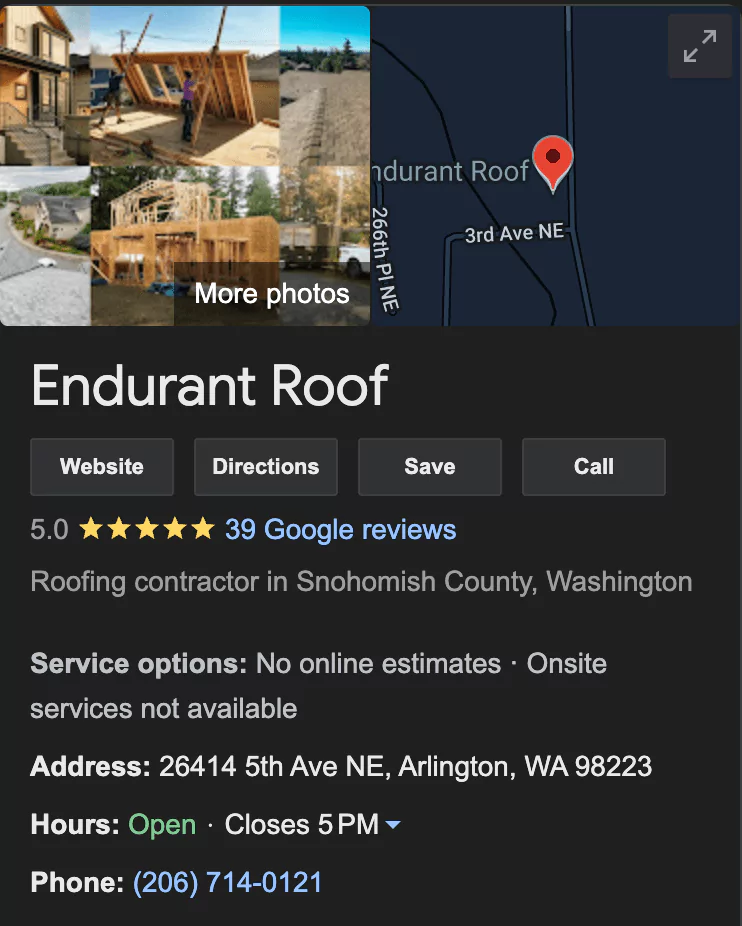
Local Search
10) Local Optimization
Target locations on your website on your homepage, service pages, and individual city pages.
Your homepage and service pages should target your primary city.
Create additional pages for surrounding cities within your service area.
11) NAP Citations
Use a service like Whitespark to generate or update business citations across the web.
Remember that citations are only valuable if Google indexes them, so larger sites like Yelp and Angi will contribute to your rankings, but lesser-known sites may not.
Ensure your business information (name, address, and phone number) is consistent across platforms.
12) Local Backlinks
Partner with local businesses or organizations to become part of the community.
As you build local relationships, backlinks will naturally occur from their website to yours.
Avoid buying links from websites merely for “SEO purposes,” as it is unlikely to move the needle.
Content Marketing
13) Reduce Website Content
Less is more for Google after the Helpful Content Update and March 2024 Core Update.
You can check which of your pages and posts are not indexed by Google within Google Search Console and delete all of those pages from your website.
Next, check for blog posts that have received zero organic clicks in the last 6 months and delete those.
14) Enhance Existing Content
The resources you’ve previously spent creating new pages and posts should move toward enhancing existing ones.
Rewrite pages that are performing mediocrely on organic search and add value to them through recent jobs and unique insights.
Consider adding lead magnets on your pages, like a “Free Coupon,” to increase user engagement.
15) Incorporate E-E-A-T
Include badges, awards, author names, and credentials to ensure your content demonstrates expertise, experience, authority, and trust (E-E-A-T).
Install the DataPins plugin to showcase new roofing jobs on the appropriate pages.
Also, enrich your About Us page with detailed information about your company and staff.
Social Media Marketing
16) Create Business Social Media Profiles
Create social media profiles specifically for your business on Facebook, Instagram, YouTube, and LinkedIn.
Ensure each profile links back to your website URL and features your logo.
It makes sense to also link back to these profiles from your website.
17) Post Unique Social Content
As a roofing company, you’re not competing with Mr. Beast or a brand influencer, so publish social content that uniquely reflects your brand and services.
YouTube requires long-form and YouTube Shorts video content, which can be repurposed as Instagram and Facebook Reels.
LinkedIn also supports video content, but mix in some still images of your staff, jobs, and equipment.
18) Adhere to a Post Schedule
Short videos on YouTube, Instagram, and Facebook have a short shelf life, so stick to a regular posting schedule.
Posting at least two shorts weekly between 1 PM and 3 PM Eastern time yields the broadest audience.
If you lack enough video content to manage this post frequency, consider hiring a freelance video editor to capture your roofing jobs.
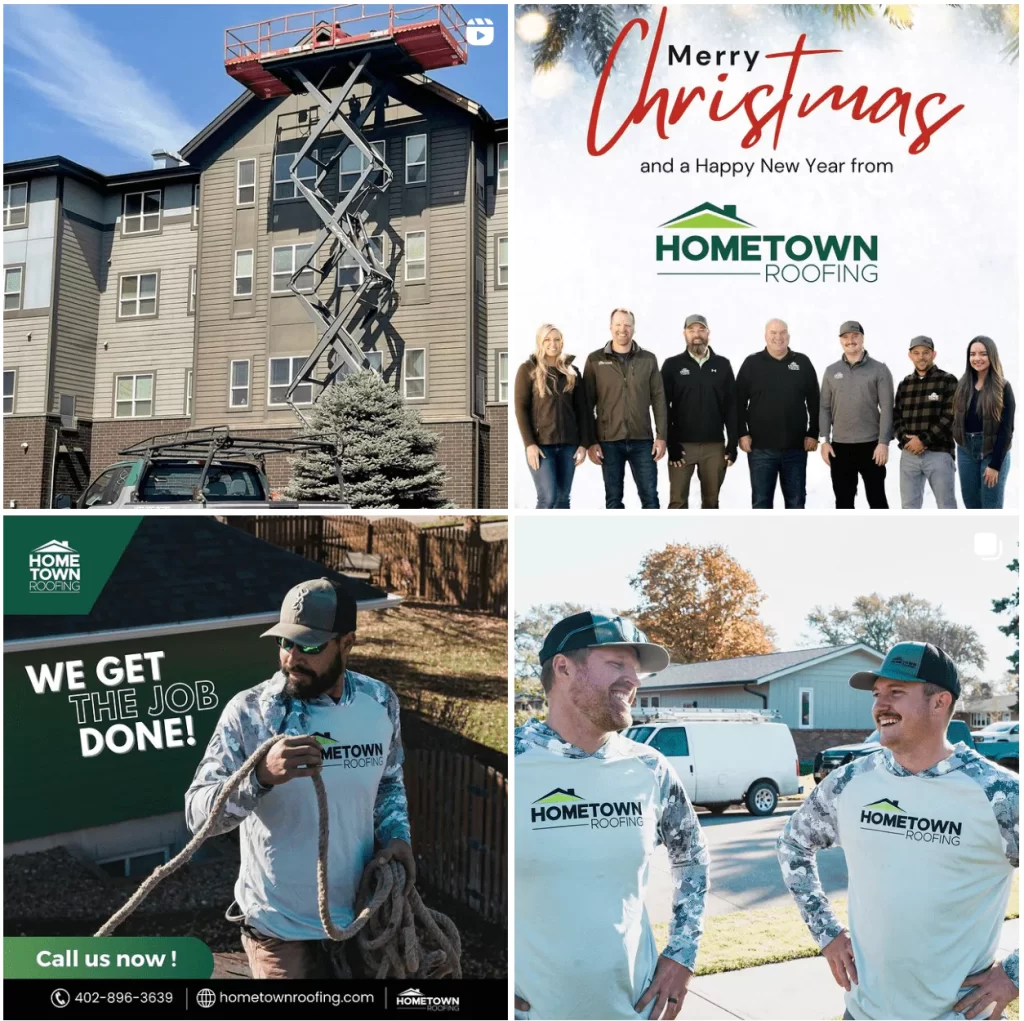
Paid Advertising
19) Google Ads
If properly executed, Strategic Google Ads campaigns can yield a positive ROI for roofers.
Every Google Ads campaign should be temporary as it supplements your broader marketing efforts.
It’s best to deploy Google Ads campaigns during seasonal opportunities for roofers.
20) Meta Ads
Meta, the owner of Facebook and Instagram, features a popular advertising platform that incorporates an AI-assisted Advantage+ targeting algorithm.
With this in mind, you can reach homeowners on Facebook or Instagram with Meta Ads.
Like Google Ads, meta ads can be expensive, so it’s best to use social media ads as a short-term promotional tactic.
21) Nextdoor Ads
Nexdoor is a neighborhood community platform where homeowners consult with one another on various matters, including the best roofers to hire in their areas.
This dynamic presents a valuable advertising opportunity for local roofers who can target homeowners on a hyper-local level (think actual neighborhoods).
Once you infiltrate the good graces of these hotbed communities, word-of-mouth begins to gain momentum en route to a cohesive multi-channel branding campaign.

Software Solutions
22) DataPins
DataPins helps market your roofing company by showcasing recent jobs in the form of pins.
Pins consolidate geo-coordinates, min-maps, job photos, job descriptions, and schema markup to serve as a digital hand raise for search engines while instilling trust in website visitors.
The DataPins software allows roofers to tag specific service types to pins so they appear on the most appropriate website pages.
23) Link Whisper
Link Whisper is an excellent on-page optimization tool for internal linking.
The Link Whisper software tells site administrators which of their pages has internal links and from which pages.
The user-friendly dashboard makes it easy to identify which pages need more internal links.
24) WPRocket
I noted the importance of site speed in an earlier tactic, and the WPRocket plugin helps speed up your website automatically.
WPRocket is a WordPress caching plugin that incorporates various tactics, including lazy loading, to speed up website pages for visitors.
Site speed is a ranking factor, so every roofing company should invest in tools like WPRocket.
Email Marketing
25) Email Marketing CRM
Utilize a CRM like Aweber to organize your subscribers.
AWeber makes it simple to categorize subscribers by variables like consumer, prospect, lead, etc.
Furthermore, a tool like Aweber has an API to automate new subscribers from lead magnets.
26) Publish Email Lead Magnets
You may already have a list of emails from current customers. However, you’ll need to get more.
One way to capture emails is to publish lead magnets on your website or social media channel.
Offer a free coupon, guide, or PDF in exchange for the prospect’s email address, which you subsequently send to your CRM.
27) Customize Email Campaigns
As you gather more emails, you can craft customized and segmented campaigns to reach your prospects best.
For example, homeowners interested in tile roof repair can be tagged with “tile” to receive a custom email sequence detailing your tile roofing services.
The same tactic will apply to other services like metal roofing, commercial roofing, etc.
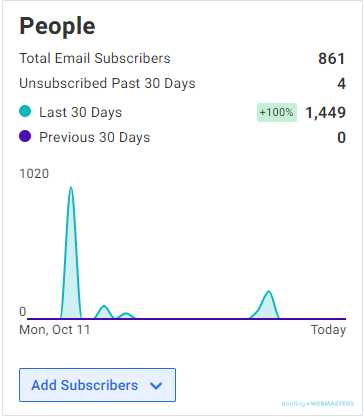
Referral Programs
28) Incentivize Refferals
Encourage word-of-mouth by offering incentives (like discounts or coupons) in exchange for referrals.
After receiving great services, referrals often happen naturally when homeowners eagerly share their experiences with friends and neighbors.
However, offering that extra incentive will allow your company to generate demand quickly.
29) Track Referrals
As your company grows, it becomes easy to lose track of referrals.
Such disorganization can breed resentment from customers who were promised referral incentives but failed to receive them.
Invest in referral tracking software to avoid such occurrences and streamline your referral process for the best results.
30) Leverage Referrals
Each new referral customer should go through a well-crafted introductory program incorporating your email marketing campaigns and video content.
It’s important that you overdeliver at the inception of this new relationship to maximize each referral’s impact.
When referral customers are impressed, their referrer is validated, fostering goodwill at every touch point of your program.
Innovative Marketing
31) AI/LLM Marketing
Appearing in Google’s AI Overviews (AIO) has emerged as a foundational component of organic search visibility.
And the positive impact of AI mentions expands beyond Google as more consumers use tools like ChatGPT to get answers about roofing companies.
Optimizing for AI and large language models overlaps significantly with traditional SEO tasks but places an even greater emphasis on brand mentions, as these AI platforms scan reputable websites to train their models.
32) Specialization
Specializing in a roofing sub-topic or service is a great way to stand out from competitors.
For example, do you perform primarily commercial, metal, or foam roofing?
If so, consider going “all-out” on your specialty on your website and other roofing marketing materials.
33) Podcasting
Start a roofing podcast that interviews your staff and others in your network.
Podcasts are an increasingly popular marketing medium but are still relatively untapped in the roofing niche.
You will likely be among the first to start a roofing podcast in your service area.
34) Strategic Relocation
Your business address (hidden or not) plays a role in your roofing marketing campaign.
This is especially true regarding Google Maps, which rarely ranks roofing companies whose addresses are on the outskirts of a city, small village, or unincorporated area.
I’ve helped some roofing clients move their business address to a prime location and 10x leads in less than 6 months.
Traditional Marketing
35) Door Knocking
I encourage all roofers to maintain or begin a door-knocking schedule because of its impact on your digital marketing tactics.
My data reveals that roofers who door-knock benefit from SEO at a 2:1 higher rate than those who don’t door-knock.
There are many reasons for this phenomenon, but one to consider is that homeowners search for your brand name after you knock on their door.
36) Print Advertising
Magazines and newspapers are primarily obsolete but still perform well with older demographics.
Buying cheap ad space in your hyper-local magazine or newspaper can prove a low-risk reward endeavor.
Of course, I only recommend this tactic in conjunction with a digital marketing presence.
37) Flyers
Flyers can help maximize door-knocking efforts or serve as a backup to homeowners who are not home or do not answer the door.
While most consumers will toss your flyers in the trash, 23% of them are potential customers.
Like print ads, flyers work best when you have a digital online presence where homeowners can further research your company and its reputation.
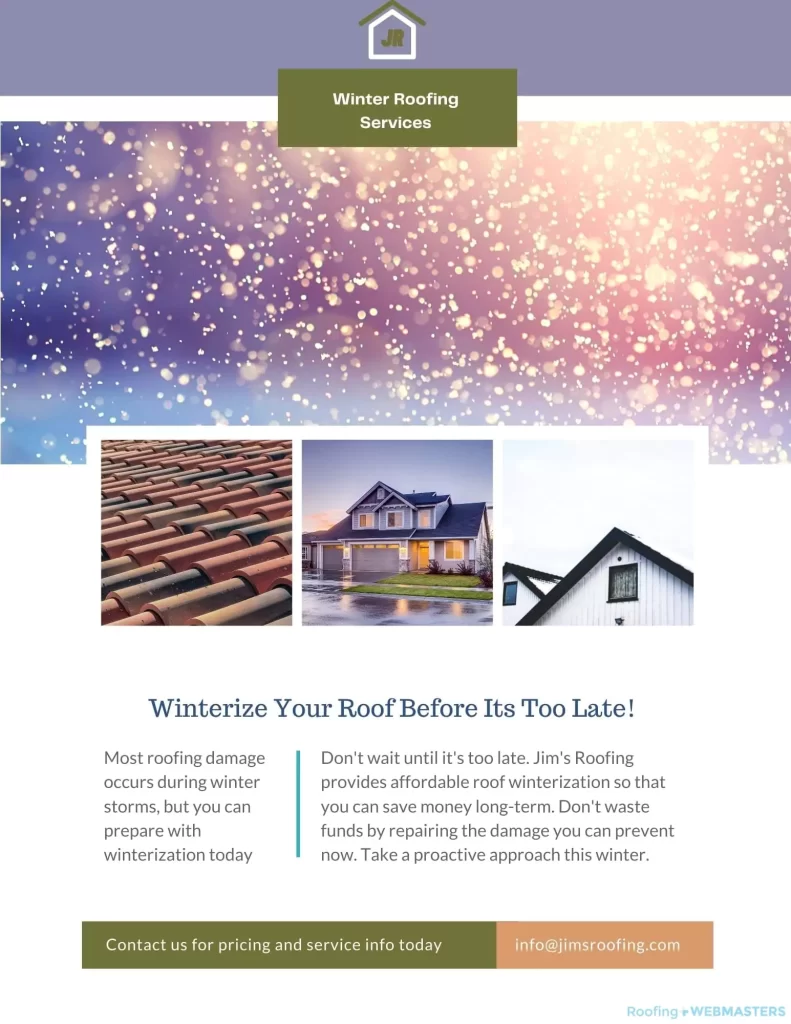
Community Outreach
38) Support Local Businesses
Shop at your local hardware store and dine out at your nearby restaurants.
These subtle actions present networking opportunities while building goodwill in your community.
Other business owners in your area begin to recognize your face and form a trust for your roofing business organically.
39) Attend Local Events
Whether you attend your local church for Sunday service or a Little League Baseball tournament, immerse yourself in the community you seek to serve.
I do NOT recommend attending these events strictly for promotional purposes or handing out business cards or flyers.
Instead, your presence alone is building goodwill in your community in an organic way.
Bonus Tip: Sponsor Local Organizations
While blatantly handing out flyers at local events is a bad look, sponsorships are very professional.
You can sponsor your local Little League team or your church, which will further your business in the community and promote your brand to more viewers.
As mentioned in the “Local Link Building” section, these sponsorships can generate valuable backlinks, contributing to your Google rankings.
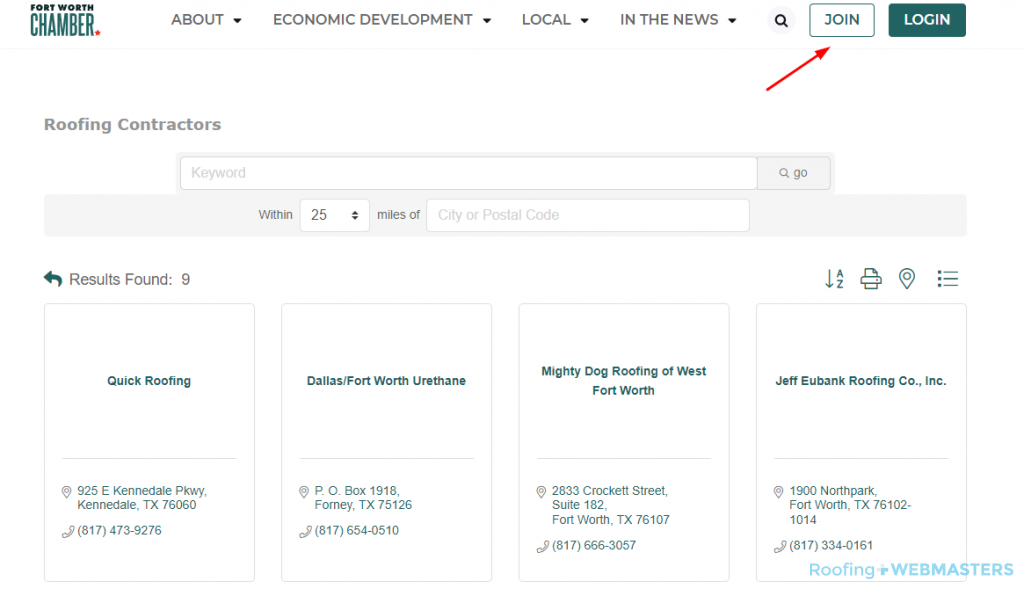
Final Thoughts
Having spent the past 15+ years working with roofing companies and collecting marketing data, I feel it is only fitting that I share my insights with the broader roofing industry.
While most posts on this subject rehash techniques from other industries based merely on gut feeling, my data-driven insights are designed to encourage marketing actions from roofers.
A well-crafted website with DataPins supplemented by a strategic paid advertising campaign is the formula that most consistently delivers ROI for roofing marketing.
However, I will never discount the long-standing tradition of door-knocking and word-of-mouth marketing, both of which help maximize the impact of modern digital marketing tactics.
If you are interested in personalized roofing marketing services, you can reach out anytime.
From one business owner to another, I understand that roofing marketing can feel overwhelming, even with data-driven information presented for free.
Therefore, feel free to call me personally at (800) 353-5758 to discuss these tactics in detail.

Author: Nolen Walker
Nolen Walker is the founder of Roofing Webmasters, assisting roofers with digital marketing for 15+ years. Nolen is also the creator of DataPins: The Map Ranking App™ and author of A Complete SEO Guide for the Roofing Small Business Owner. In addition, Nolen hosts The Roofing SEO Podcast on Spotify.




